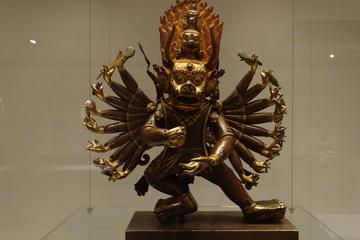Museum of Asian Art
TIME : 2016/2/22 11:06:20

Museum of Asian Art
With over 20,000 Asian artifacts, the Museum of Asian Art in Berlin is one of the largest museums of ancient Asian art in the world. It came to be as a result of the German Turfan expeditions, which were conducted between 1902 and 1914 in Xinjiang, China. It focuses more specifically on works dating back to 4000 B.C. and originating from the Indo-Asian subcontinent (Sri Lanka, Nepal, China, Pakistan, Japan, Thailand, and India, to name a few), most notably Buddhist sacred sites.
The famous Turfan collection is one of the museum’s most sought-after highlights; it features 1800-years old paintings and sculptures from what is today northwest China. The museum features plenty of other crowd-pleasers, including the precious Berlin Yuegutang Collection (Chinese ceramics from the Neolithic period) and a collection of Japanese paintings and East-Asian lacquer objects. India is also well-represented, with several thousand-year-old terracotta sculptures and a true-to-size round stupa and the rectangular temple, a testament to India’s sacred architecture. The museum houses a traditional Japanese room where tea ceremonies are observed.
Practical Info
The Museum of Asian Art is located at Lansstraße 8 in Berlin’s southwestern Dahlem district, in the same building as the Ethnological Museum of Berlin. It can be reached by car from central Berlin via route B1 and Fabeckstraße. There is also a U-Bahn station just around the corner, Dahlem-Dorf, which is on line U3. The museum is open from 10 AM to 5 PM on weekdays, and from 11 AM to 6 PM on the weekends. It is closed on Mondays. Entry costs €8 per adult and €4 per student.
